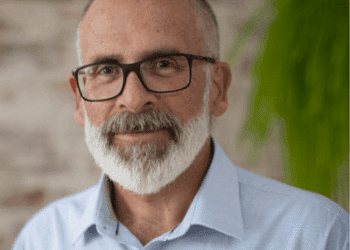Five years ago, when I was working at National Australia Bank, I set up my own self-managed super fund (SMSF).
At the time, I was dissatisfied with what the big super funds were offering. The options felt limited, the structures rigid, and the agency over my own money almost non-existent. I wanted more control and more ability to shape my investments around my convictions.
The catalyst for me was cryptocurrency.
Coming from a banking background, I was not a “crypto native”. But I could see that digital assets were fast becoming part of the future of finance. And the reality then, as now, is that if you want to include cryptocurrency as part of a retirement portfolio, the only viable pathway is through an SMSF.
That choice took me out of the comfort of a large industry fund and into a space where I had to learn fast, build confidence and take responsibility for my own financial future.
My husband and I are joint trustees but I am the one who drives the investment strategy. That still feels unusual in Australia, where the perception lingers that it’s the man who takes the lead in SMSF decisions. My experience has been the opposite. And increasingly, I meet more women like me: stepping forward as trustees, making the calls, and taking control of their retirement strategies.
In my case, we’ve gone further than most. Cryptocurrency investing isn’t just something I do on the side. It’s written into our trust deed. Our SMSF is deliberately structured to include digital assets as part of a diversified retirement portfolio, in line with the Australian Taxation Office’s guidance that cryptocurrency strategies must be formally enshrined in the fund’s trust deed and investment strategy.
And I’m absolutely not alone, according to the data.
The rise of women trustees
The SMSF landscape is undergoing a profound shift that every financial adviser should understand. Women now account for almost half of all SMSF members, but more importantly, they’re driving growth.
In the September quarter of 2024, women aged 35 to 44 made up 40.4 per cent of new SMSF entrants, outpacing men in the same age bracket at 36.8 percent. For the first time, women aren’t just joining SMSFs. They’re leading their expansion.
This presents both an opportunity and a challenge for advisers. The opportunity lies in serving a demographic that’s increasingly taking control of their retirement strategies. The challenge is understanding what drives these decisions and how to support them effectively.
Many female trustees share similar frustrations with traditional super options: limited investment choices, rigid structures, and minimal control over their financial future. This dissatisfaction often catalyses their move to SMSFs, where they can align portfolios with their values and access broader investment opportunities.
Digital assets represent a particularly significant driver. SMSF cryptocurrency holdings have surged sevenfold from around $240 million in 2021 to approximately $1.67 billion as of March 2025. While cryptocurrency still represents only a fraction of total SMSF assets exceeding $1 trillion, it’s become a gateway for many women entering the SMSF space who want exposure to next-generation assets that traditional super funds can’t provide.
A significant portion of female trustees inherit their role suddenly through bereavement. This creates a moment of vulnerability that can transform into empowerment with the right support. These women often face complex SMSF structures they didn’t establish, requiring advisers who can build trust while simplifying complexity.
What this means for advisers
Female trustees typically approach SMSF management differently than their male counterparts. In particular, they are more likely to seek comprehensive education before making decisions.
For cryptocurrency specifically, female trustees aren’t speculating. Instead, they’re seeking inclusion in the next era of wealth-building. This requires advisers to understand that proper cryptocurrency integration must be formally documented in trust deeds and investment strategies, in line with ATO guidance.
The industry still presents significant barriers that advisers can help overcome. SMSF rules remain complex, and many advisers struggle with newer asset classes like cryptocurrency, creating an education gap that needs addressing through CPD-accredited training and practical resources.
Female clients, particularly widows, often face a trust deficit with financial services.
Advisers who invest in transparent communication, clear compliance processes, and patient education will differentiate themselves. Integrated reporting, streamlined compliance, and clear explanations of complex structures become essential when serving this demographic.
The commercial opportunity
Australia’s SMSF sector represents one of the world’s largest pools of self-directed retirement capital. Female trustees are arguably its most dynamic growth engine. Advisers who position themselves to serve this segment effectively through education, trust-building, and comprehensive service offerings will capture a disproportionate share of future growth.
This isn’t just about serving existing demand; it’s about recognising that women trustees are setting the agenda for what comes next in retirement planning. They’re driving demand for greater diversification, values-aligned investing, and multigenerational wealth strategies that extend beyond traditional approaches.
Because in the end, the data is clear. Women are reshaping the SMSF landscape.
Advisers who understand this shift, invest in the right capabilities, and build trust through transparency and education will find themselves at the centre of significant growth.
The question isn’t whether this trend will continue, it’s whether advisers will position themselves to benefit from it.
Those who do will find themselves serving not just individual clients but helping to shape the future of wealth management in Australia.
Kate Cooper is CEO of OKX Australia.




Kate, give me a female client, anytime. More appreciative, easier to understand, implements advice meticulously, pleasure to look after and gives lots of referrals (to other women).
Thanks so much for your comment – this is anarea I am hugely passionate about and so glad to see others are too!
Hi, Kate. Great article. I’m pleased to report that, contrary to the experience you have outlined here, I have a significant proportion of my clientele who are either widows or divorcees. I find that their appreciation of an adviser who respects their wishes and understands their needs and goals is significant.
Bravo to you for championing an ultra tailored approach to your clients needs regardless of their background.
Kate, most smart advisers know that failure to appease the woman usually results in a no-sale.
Very very good point.